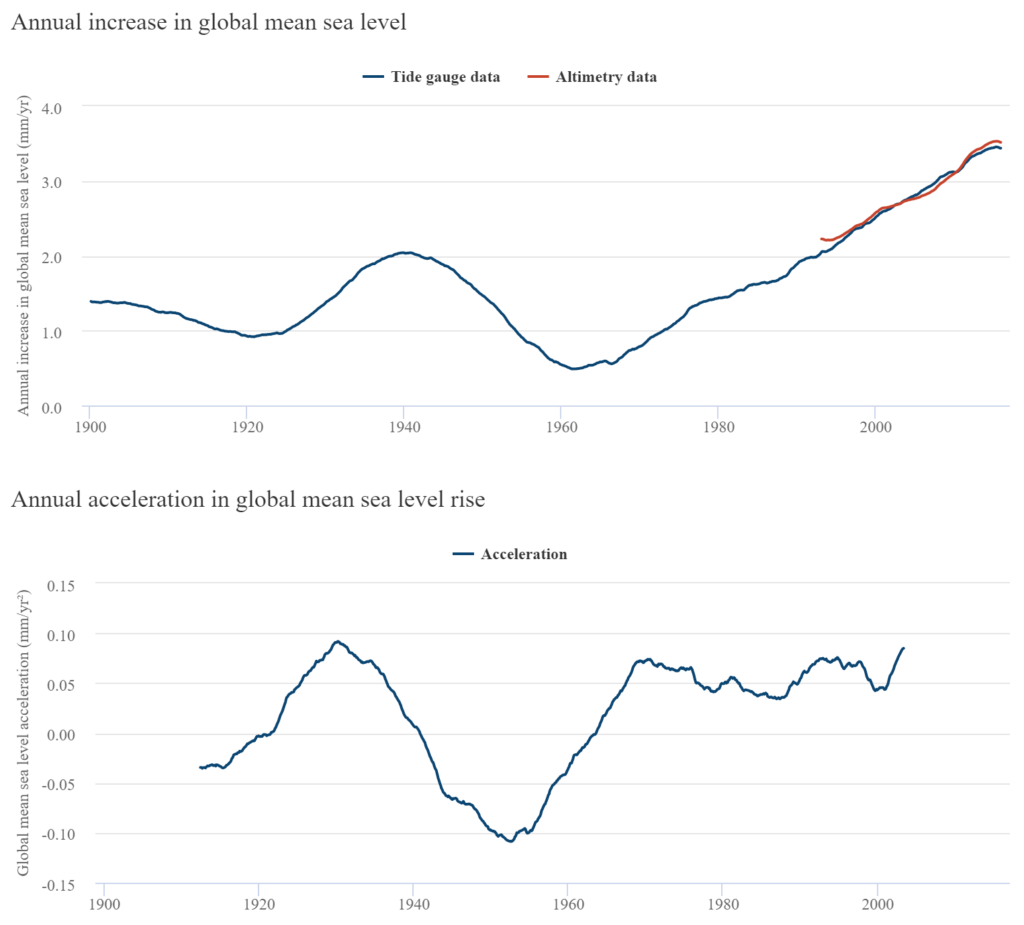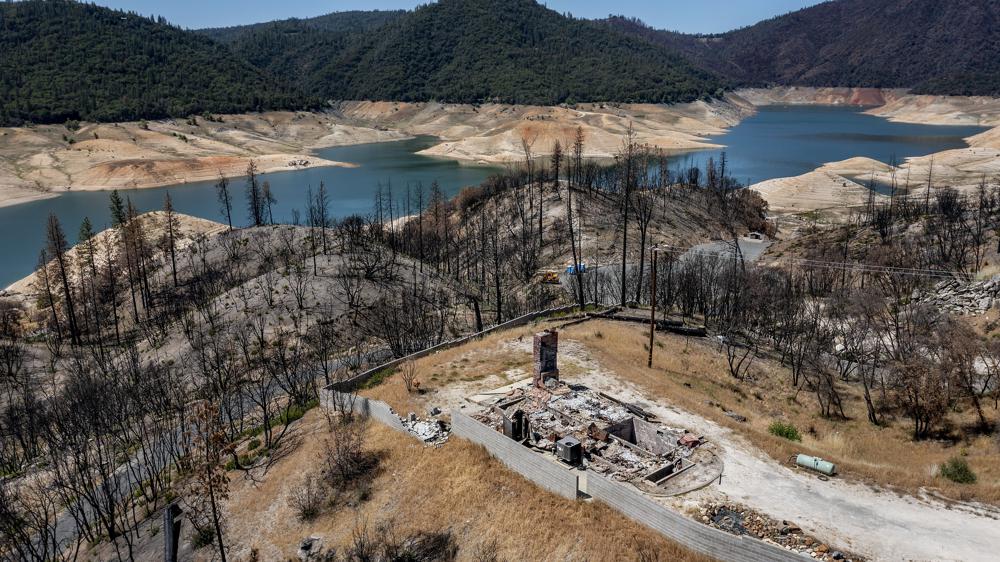Global sea level rise began accelerating “30 years earlier” than previously thought
By Ayesha Tandon
5 August 2019
(CarbonBrief) – Global sea level rise began to accelerate in the 1960s, 30 years earlier than suggested by previous assessments, a new study finds.
The study, published in Nature Climate Change, introduces a new technique to more accurately determine historical global sea levels by combining two different statistical approaches.
It was found that the southern hemisphere, home to many developing small island nations, experienced the majority of the observed sea level rise, the lead author tells Carbon Brief.
The implication of this work is that ocean heat uptake will “likely increase again in the near future, further increasing the rate of current sea level rise”, another scientist tells Carbon Brief. […]
Global sea level rise began accelerating ‘30 years earlier’ than previously thought
Persistent acceleration in global sea-level rise since the 1960s
ABSTRACT: Previous studies reconstructed twentieth-century global mean sea level (GMSL) from sparse tide-gauge records to understand whether the recent high rates obtained from satellite altimetry are part of a longer-term acceleration. However, these analyses used techniques that can only accurately capture either the trend or the variability in GMSL, but not both. Here we present an improved hybrid sea-level reconstruction during 1900–2015 that combines previous techniques at time scales where they perform best. We find a persistent acceleration in GMSL since the 1960s and demonstrate that this is largely (~76%) associated with sea-level changes in the Indo-Pacific and South Atlantic. We show that the initiation of the acceleration in the 1960s is tightly linked to an intensification and a basin-scale equatorward shift of Southern Hemispheric westerlies, leading to increased ocean heat uptake, and hence greater rates of GMSL rise, through changes in the circulation of the Southern Ocean.
Persistent acceleration in global sea-level rise since the 1960s



